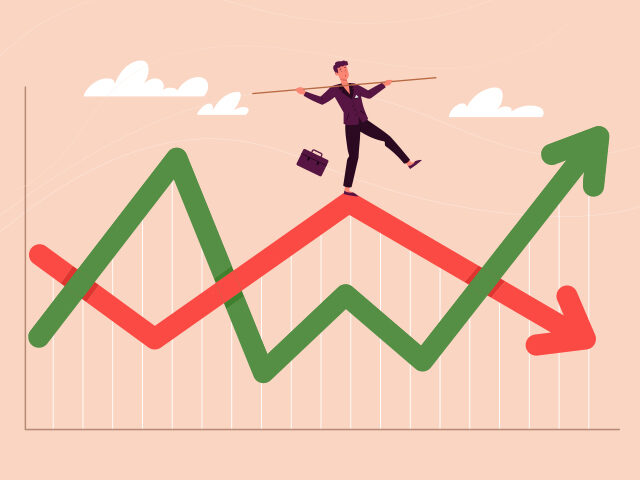Everyone agrees that we’re headed into an economic recession next year, but recent data indicates the consensus could be wrong about the timing.
The Philadelphia Fed’s survey of professional forecasters produced the most bearish result ever in the fourth quarter survey. While the third quarter survey looked pretty bleak, it had the odds of a negative quarter next year at 38.6 percent for the first quarter, 36.5 percent in the second quarter, and 34.1 percent in the third. The latest survey has the odds near 50 percent for the first three quarters of next year, falling only to 43.5 percent by the end of the year.
The bond market seems to be telling us the same story. The famous 10-2 yield curve, which measures the difference in yields between 10-year Treasuries and 2-year Treasuries, has continued to plunge deeper into inversion territory. As of Monday, it was inverted by 0.81 percentage points, the biggest inversion since 1981. The 10-year 3-month curve, which the economists say has a better track record of predicting a recession, is inverted by almost as much at 0.76 percentage points at the start of this week.

So when will the recession strike? Michael Gapen at Bank of America forecasts the U.S. economy will slip into a recession in the first quarter of next year. This is probably close to the consensus view now on Wall Street, and it is the source of the pivot thesis that sees stocks falling sharply at the start of next year and then rallying in the back half. The explanation for the rally is that the Fed will see rising unemployment and a contracting economy and “pivot” away from hiking in March. That would put the Fed’s benchmark interest rate around five percent to 5.25 percent, assuming a 50-basis point hike next week, either a 25 or 50-basis point hike in February, and a 25-point hike in March. Many on Wall Street now believe the Fed will pause after March or even begin to cut rates to buoy the economy.
In other words, the bear case on the economy in the near term is actually a bull case for stocks because the earlier recession prompts an earlier pause or reversal by the Fed.
The weakness in this view is that the economic data received so far for the fourth quarter is much stronger than expected. Forecasters surveyed by the Philly Fed had the economy growing at just a one percent pace in the final three months of the year, with a 36.3 percent chance of a contraction. Yesterday’s purchasing managers index for the services sector from the Institute of Supply Management, however, pointed to an economic acceleration in November. Consumer spending rose 0.8 percent. U.S. job gains were unexpectedly strong in November, and wages gains were robust. This does not look like an economy teetering on the brink of a recession.
There are areas of economic weakness. The housing market is in a recession. Surveys of manufacturers continue to suggest the factory sector has turned sluggish—although the hard data on factory orders does not. Exports are struggling because of economic weakness in Europe.
If the economy does not contract in the first quarter, the Fed may decide it is too early to pause its interest rate hikes. Indeed, it will likely take a significant signal that the labor in particular has cooled off before the Fed will pause. That could mean significantly higher rates than the market is currently expecting.
We still think a slump is coming, but the economy looks a lot more resilient in the face of Fed hikes than analysts give it credit for. The recession will likely not be avoided, but delayed—with the implication that inflation will stay higher for longer and the Fed will hike more than thought.

COMMENTS
Please let us know if you're having issues with commenting.